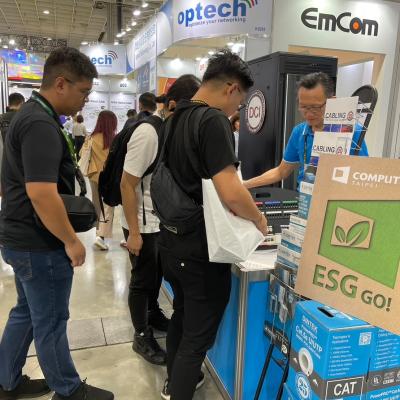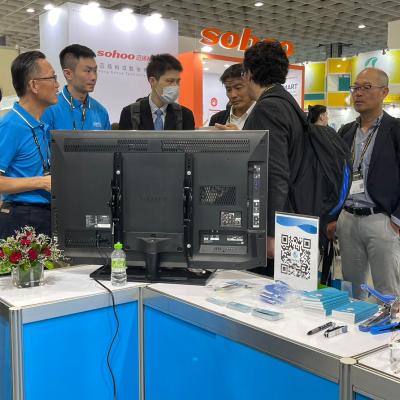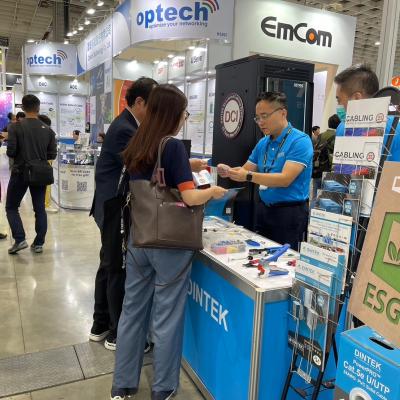Patch panels and cassettes: streamlining network connectivity
In today's fast-paced digital world, reliable and efficient network connectivity is crucial for businesses of all sizes. To ensure smooth communication and data transfer, network administrators often rely on patch panels and cassettes to manage the complex web of connections in their data centers or telecommunications rooms. In this article, we will explore what patch panels are and delve into the various types of cassettes they can accommodate, highlighting their key features and benefits.
What are patch panels?
A patch panel is a piece of networking hardware that acts as a central point for organizing and connecting different devices in a network. It typically consists of a metal panel with a series of ports, where network cables can be terminated or patched. Patch panels are commonly used in data centers, telecommunications rooms, and other networking environments to streamline connectivity and simplify cable management.
Patch panels come in different configurations, such as rack-mounted or wall-mounted, and can have various port densities to suit different networking requirements. They are often color-coded and labeled for easy identification and maintenance. Patch panels are used in conjunction with patch cords, to establish connections between different devices, such as servers, switches, routers, and storage devices.
Types of cassettes for patch panels
Patch panels can accommodate different types of cassettes, allowing easy termination and management of network connections. Cassettes are designed to fit into patch panel enclosures and provide a neat and organized solution for connecting and managing network cables.
Fiber optic cassettes
Fiber optic cassettes are used for terminating and managing fiber optic cables, which are commonly used for long-distance and high-speed data transmission. Fiber optic cassettes come in different configurations, such as LC, SC, MPO, or MTP, to accommodate different types of fiber connectors. They can be used for single-mode or multi-mode fiber and can have different port densities, such as 12, 24, or 48 ports, to suit different networking requirements. Fiber optic cassettes are ideal for data centers, enterprise networks, and telecommunications applications that require high-speed and high-bandwidth connectivity.

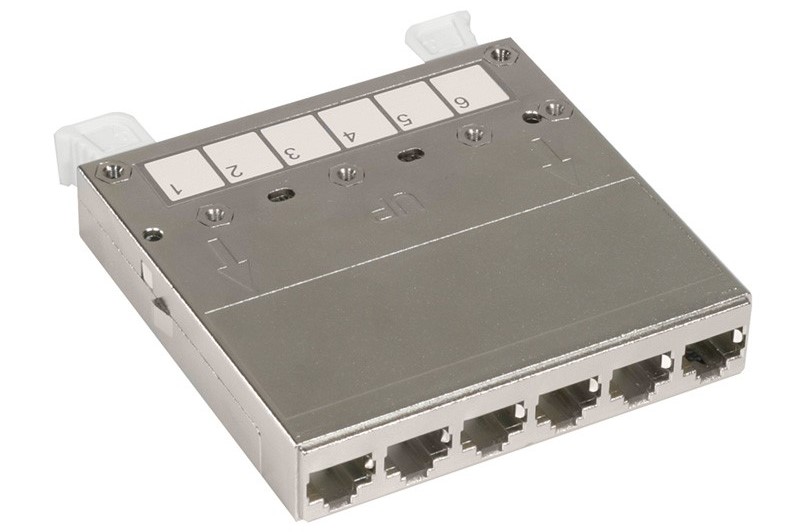
Copper cassettes
Copper cassettes are used for terminating and managing copper cables, which are commonly used for short-distance data transmission within a local area network (LAN). Copper cassettes typically come with RJ45 connectors, which are the standard connectors used for Ethernet cables. They can have different port densities, such as 12, 24, or 48 ports, and can support different Ethernet standards, such as Cat.5e, Cat.6, Cat6.A, or Cat.8, depending on the networking requirements. Copper cassettes are widely used in office networks, data centers, and other LAN applications that require reliable and high-speed connectivity.
Mixed media cassettes
Mixed media cassettes are designed to accommodate both fiber optic and copper cables in the same cassette, making them a versatile solution for networks that require a combination of different types of connectivity. Mixed media cassettes typically come with a combination of fiber optic and copper ports, such as LC or SC for fiber optic connections, and RJ45 for copper connections. They can have different port densities and can support different types of fiber connectors and Ethernet standards, depending on the networking requirements. Mixed media cassettes are ideal for data centers, enterprise networks, and other networking environments that require flexibility and scalability in network connectivity.
Benefits of using cassettes with patch panels
Using cassettes with patch panels offers several benefits in terms of connectivity, flexibility, and manageability. Some of the key benefits include:
Simplified cable management
Cassettes allow for organized and structured cabling within patch panels, reducing cable clutter and making it easier to identify and manage connections.
Flexibility in connectivity
Cassettes come in different configurations, allowing for a variety of fiber optic and copper connections in the same patch panel, providing flexibility in network design and scalability.
Modular Design
Cassettes provide a standardized termination point for network cables, ensuring proper termination and reducing the risk of signal loss or interference.
Time and cost savings
Cassettes simplify the installation process, reducing labor and installation costs, and making it easier to swap or upgrade connections in the future.
Easy identification and labeling
Cassettes simplify the installation process, reducing labor and installation costs, and making it easier to swap or upgrade connections in the future.
Improved network performance
Properly terminated cassettes help maintain signal integrity, reducing the risk of network disruptions and improving overall network performance.
Neat and organised appearance
Using cassettes with patch panels results in a cleaner, more organized appearance, making it easier to troubleshoot and maintain the network infrastructure.
Proofing for the future
Cassettes provide flexibility to adapt to changing networking requirements, allowing for easy upgrades or modifications without having to replace the entire patch panel infrastructure.
Conclusion
In conclusion, patch panels and cassettes are essential components for efficient network connectivity in data centers, telecommunications rooms, and other networking environments. They offer several benefits, including simplified cable management, flexibility in connectivity, efficient termination, time and cost savings, improved network performance, neat and organized appearance, easy identification and labeling, and future-proofing. Considering these advantages, incorporating cassettes into patch panel setups can greatly streamline network connectivity and enhance overall network performance.
For more articles in the series, check out:
1 : Cassette-Based Copper Cat.6A Solutions for High-Performance Networks
2 : What are Cassette Prefabricated Copper Cables?
3 : Choosing the Right Fiber Cassettes for Your Network
DINTEK'S PATCH PANEL SOLUTION
DINTEK's ezi-PANELTM makes configuring multiple topologies easy within one patch panel arrangement. The panels accept either copper and fiber modules, or a mix of both, loaded with or without trunk cable options. Having the option of presenting fiber and copper outlets within one panel offers much more flexibility in the installation. It can also reduce rack space required and provide future-proofing.
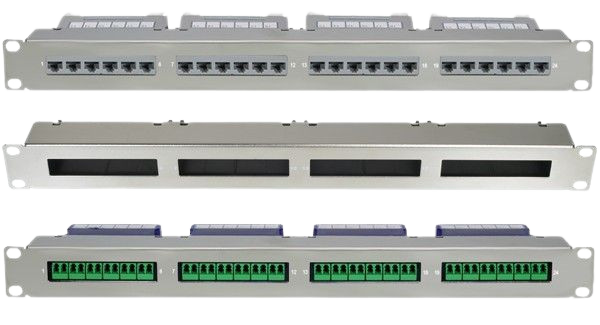
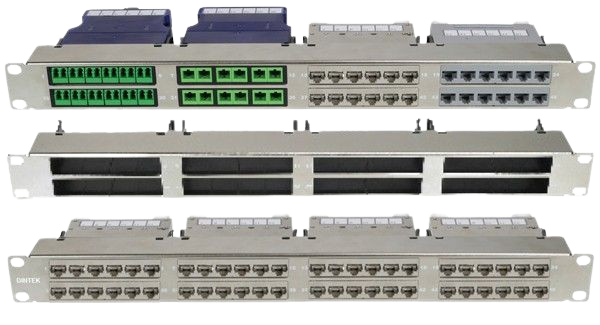
DINTEK's 1U 4 Slot and 1U 8 Slot ezi-PANELTM allow for the inserting of Fiber Optic LC cassettes and all RJ45 shielded and unshielded cassettes. This modular patch panel solution supports the ANSI/TIA-942 cabling standards pertaining to the data center environment and utilizes the three core components; the enclosure panels, RJ45 and fiber optic cassettes, and pre-fabricated cables.




